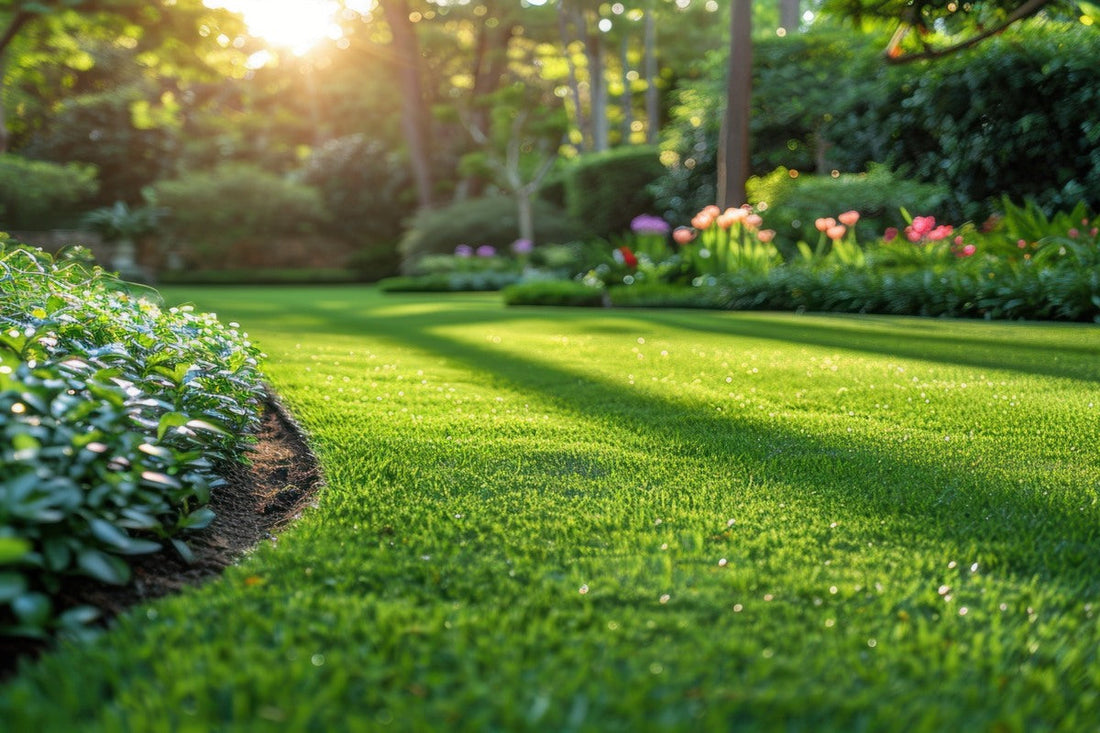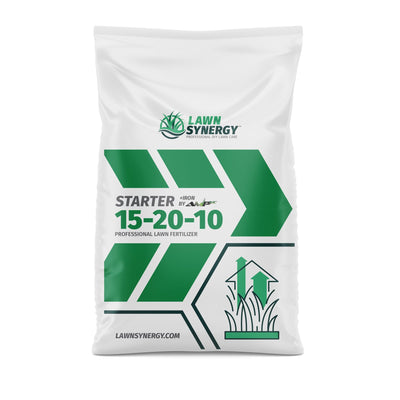If you're looking for a durable, low-maintenance turf that thrives in heat and poor soil, understanding how to plant bahia grass seed is step one.
Bahia is a warm-season grass that requires specific timing, soil preparation, and post-planting care to establish successfully.
We're here to walk you through every step, based on what works across real properties in Florida, the Gulf Coast, and the Southeast. Without further ado, let's get into it.
What this article covers:
- What Makes Bahia Grass a Good Choice
- How to Prepare Your Lawn for Seeding
- Step-by-Step Guide to Planting Bahia Grass Seed
- Watering and Germination Timeline
What Makes Bahia Grass a Good Choice
Bahia grass (Paspalum notatum) is a warm-season perennial known for its deep root system, drought resistance, and ability to grow in sandy, acidic, or nutrient-poor soils.
It's especially popular in Florida and southern coastal regions due to its resilience and low fertility demands.
Unlike finer-bladed grasses like Bermuda or zoysia, bahia has a coarser texture and grows in upright clumps with minimal thatch buildup. It handles full sun well, performs with little irrigation, and holds up under moderate traffic.
At Lawn Synergy, we often recommend bahia for DIY homeowners who want a tough, self-reliant lawn that won't need weekly babysitting or heavy fertilization. And when planted correctly, it establishes fast and keeps weeds at bay.

Best Time of Year to Plant Bahia Grass
Bahia grass is best planted in late spring through mid-summer when soil temperatures are consistently above 70°F. That's when germination is fastest and most reliable.
The ideal seeding windows are:
- Florida & Deep South: Mid-April to early August
- Southeast/Mid-South Transition Zones: May to late July
Avoid seeding too early in spring or too late in summer. Cold soils will delay germination or stop it completely, and late-season seeding doesn't give roots enough time to establish before fall.
How to Prepare Your Lawn for Seeding
Success with Bahia starts with proper prep. Bahia seed needs full soil contact and consistent moisture in the top layer to germinate well. Here's how to prep your lawn.
- Clear and Mow: Remove any existing weeds, debris, or turfgrass. For renovation projects, scalp the lawn to 1 inch and bag clippings. If you're overseeding, mow low and dethatch if necessary.
- Loosen the Soil: Use a rake, dethatcher, or light tiller to break up the top 1 to 2 inches of soil. Bahia seed won't germinate well on crusted or compacted ground.
- Apply Starter Fertilizer: Use a phosphorus-rich product like Starter 15-20-10 or 0-46-0 Triple Superphosphate to promote strong early root development. Spread before or immediately after seeding.

Step-by-Step Guide to Planting Bahia Grass Seed
Once your soil is properly prepared and conditions are right, follow these steps to establish healthy, uniform bahia turf.
1. Calculate How Much Seed You Need
For new lawns, apply 5 to 10 lbs per 1,000 sq. ft. Bahia seed is coarser and less dense than many cool-season grasses, so slightly higher application rates are often needed in sandy or low-nutrient soils.
For overseeding an existing lawn, reduce the rate to 2.5 to 5 lbs per 1,000 sq. ft.
To determine your total amount, multiply your lawn's square footage by the seeding rate (divided by 1,000), then round up slightly to cover edges and uneven terrain. You can also use our “How Much Grass Seed Do I Need” guide for more info.
2. Spread the Seed Evenly in Two Directions
Use a calibrated rotary or drop lawn spreader. Divide your total seed amount in half and apply one pass in a north-south pattern and the second in an east-west pattern.
This crisscross method helps eliminate streaks and improves coverage across thin or patchy areas.
3. Rake and Press Seed into the Soil
After spreading, lightly rake the seedbed to incorporate the seed into the top 1/8 inch of soil. Then press the seed into the surface using a lawn roller or by walking over the area with flat, even pressure.
Do not bury the seed deeply. Bahia germinates best when close to the surface with firm contact.

4. Cover Areas Prone to Erosion
If your lawn includes slopes, high runoff zones, or exposed soil, apply a thin layer of clean straw or a biodegradable seed blanket to protect the surface.
This reduces seed movement during watering and shields against heavy rain. It is also how to keep grass seed from washing away, especially on sloped sites.
Watering and Germination Timeline
Bahia seed germinates slowly, typically 10 to 21 days, depending on soil temperature and moisture. During this period, your job is to keep the top 1/4 inch of soil evenly moist, not saturated.
- Days 1–14: Water lightly 2 to 3 times per day to maintain surface moisture.
- Days 15–30: Cut back to once daily, increasing depth of watering.
- After 4 weeks: Transition to watering every 2 to 3 days, soaking the top 4 to 6 inches.
Need help dialing this in? Our guide on how often to water grass seed breaks it down by stage, soil, and season.
Once your bahia seedlings reach 2 to 3 inches tall, mow for the first time, never removing more than one-third of the blade height. Bahia performs best when maintained at 2.5 to 4 inches.
Conclusion
Bahia grass seed gives you the power to grow a resilient, low-maintenance lawn that stands up to heat, drought, and neglect. With proper soil prep, correct seeding rate, and a smart watering plan, you'll avoid guesswork and grow with confidence.
At Lawn Synergy, we support homeowners with estate-level guidance and pro-grade seed, fertilizer, and timing strategies.
Whether you're establishing new turf or rehabbing a weedy yard, we're here to help you grow it right, without fluff, filler, or overpriced services. Get started with premium grass seed for your Bahia lawn!
Ready to learn more about lawn care? Check out these articles:


